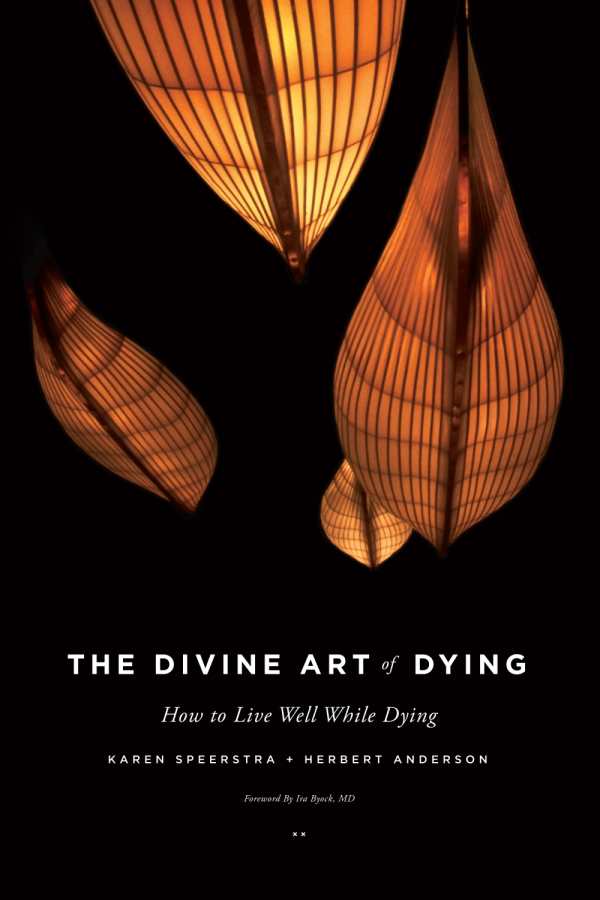The Divine Art of Dying
How to Live Well While Dying
Practical advice pairs beautifully with discussions that delve deeply into the rich emotional complexity of the act of dying.
In four clearly and tenderly written parts, The Divine Art of Dying, by Karen Speerstra and Herbert Anderson, moves through various aspects of the dying process—from the moment of recognition that one wishes to consciously “turn toward death,” to the vulnerability that accompanies helplessness, to the language used to talk about dying, to accepting the mystery and ambiguity of what comes after this life is finished.
The volume functions as a supportive and heartfelt argument for those who choose to “find meaning at the end of life by living in the truth.” Rather than denying the fact that their time is drawing to a close by undergoing continued treatments, those who decide to die consciously choose quality of life over quantity. In doing so, they often face the sometimes conscious, sometimes unconscious “fixing” of those who do not want them to “give up.”
Using coauthor Karen Speerstra’s own experience of wanting to “live fully and freely without hiding” while engaging with the dying process, the book teaches that those embracing death are still living, still capable of important acts: “We are as fully human when we are incapacitated, ill, waiting, needing … as we are when we are busy creating, producing, initiating, and making things happen.”
The authors offer general guidance through expository paragraphs that are seamlessly interwoven with personal stories, such as excerpts from Speerstra’s hospice journal and anecdotes from friends and family members. This blending of advice and storytelling, as well as the inclusion of numerous allusions to literature, folklore, and religious traditions, underscores the volume’s emphasis on the way death can be a creative, artful act for both the dying person and for those caring for him or her.
Practical advice on writing advance directives, giving gifts, and creating rituals pairs beautifully with discussions that delve deeply into the rich emotional complexity of the act of dying. Each chapter ends with a page dedicated to caregivers, where loving, helpful tips are shared for easing the transition between life and death. The book’s bibliography is a treasure for anyone continuing to seek compassionate voices on dying well.
Lack of acquaintance with death will not preclude anyone from becoming fully immersed in the wisdom of The Divine Art of Dying. In fact, what the authors offer here might be most important for the uninitiated and fearful to open up to—and to varying degrees, that includes all of us.
Reviewed by
Margaret Fedder
Disclosure: This article is not an endorsement, but a review. The publisher of this book provided free copies of the book to have their book reviewed by a professional reviewer. No fee was paid by the publisher for this review. Foreword Reviews only recommends books that we love. Foreword Magazine, Inc. is disclosing this in accordance with the Federal Trade Commission’s 16 CFR, Part 255.

